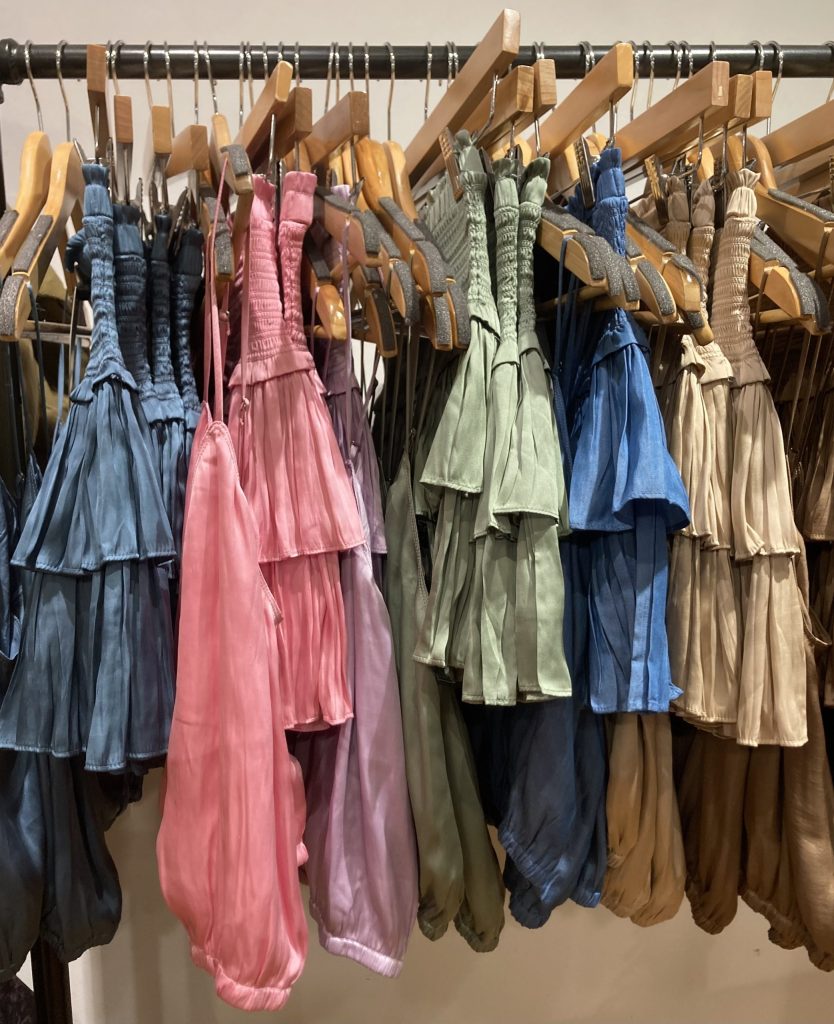I sold out my principals for a two-dollar bra.
I’m no stranger to the fast fashion industry. When I was younger, I participated in this culture until I started to notice the trash bags of clothes I discarded due to stretching seams and the material tearing like paper. I began to evaluate my own habits.
I’ve now committed the better part of my teenage years to dressing sustainably. I thrift clothes and alter them to fit my style and body like a good, though admittedly pretentious, samaritan, which through the years has become a hobby and a point of pride. However, when a friend suggested I purchase a two-dollar bra from the fastest of fast fashion brands, endorsing the quality, I contemplated the idea, searched the website, and purchased the undergarment.
In fact, while searching the site, I found several tank tops I thought would be perfect for summer and bought them as well, all within an hour. I did this despite knowing that fast fashion contributes to a culture of overconsuming and then quickly discarding cheap clothing, leading to over 38 million tons of fabric being thrown away yearly.
While I excitedly wait for my purchase, I can’t stop contemplating my own hypocrisy. A single suggestion from a trusted companion and an impossibly cheap garment was all it took to convince me to temporarily abandon the morals I had been preaching for years. This thought depressed me until I reached a realization. I, as a teenage girl without a steady income, am the target demographic for fast fashion and overconsumption. And despite this, I am ready to fully abandon fast fashion for good.
It has been reported that 65% of consumers want to buy from sustainable brands, but only 26% of people actually do. A sense of social responsibility paired with the knowledge of better options, and peer pressure to shop sustainably was once enough to free me from the cycle of overconsumption-to-discarding-to-consuming. Will it be able to free me again? There are better alternatives, and sharing them is a way to be and create responsible consumers.
This is especially possible since doing the right thing is relatively easy. The culture around healthier habits when buying new items has been named “slow fashion.” Slow fashion is the rejection of fast fashion, buying quality clothes and wearing them for as long as possible, and shopping second-hand. A great example of this is collaborative consumption, which could include passing on discarded items to friends, swapping clothing items with friends, or renting clothing. All of these methods give the consumer access to as many clothing items as they would have previously had, but without buying as many pieces.
After my fast fashion relapse, I’ve contemplated why I chose to shop sustainably in the first place, and why it matters.
Consumer habits can shape the production of items. If unhealthy consumption becomes less common, fewer fast fashion items will be bought, potentially causing those companies to produce fewer plastic-based outfits.
Social change also has a snowball effect. The more people commit to shopping sustainably, the more normal it will become, and then more other people will want to commit as well. A large aspect of improving consumer habits is making it a new norm. Often people are motivated by the actions of others, and social influence could encourage more people to stop buying first hand or fast fashion items and switch to more sustainable methods. While it is unnecessary to swear off fast fashion cold turkey, there is a danger to the ease of consuming this way, as it is a common modern-day addiction with global consequences.
As my new clothing arrives, I will wear them to the best of my ability, until inevitably the thin plastic fabric will fray and the bustier loses its clasps. As the clothes fall apart, I’ll use my slip-up as a reminder of why I shop sustainably and why I will continue to do better.
Amelia Newstadt is a student at Connecticut College in New London.

